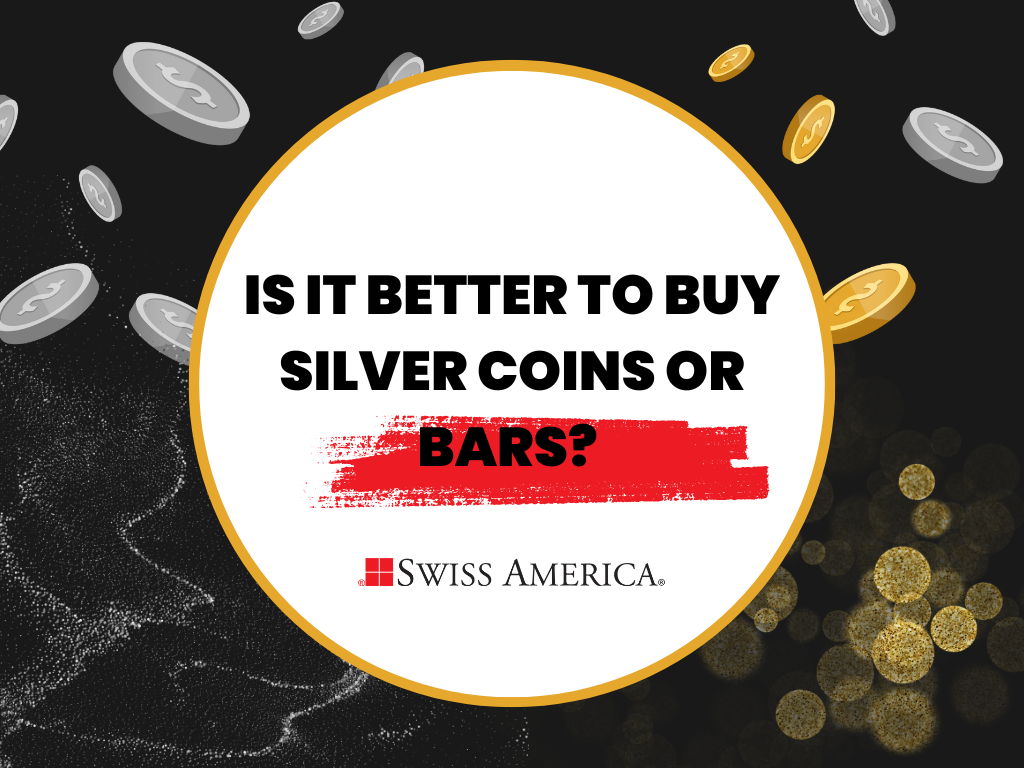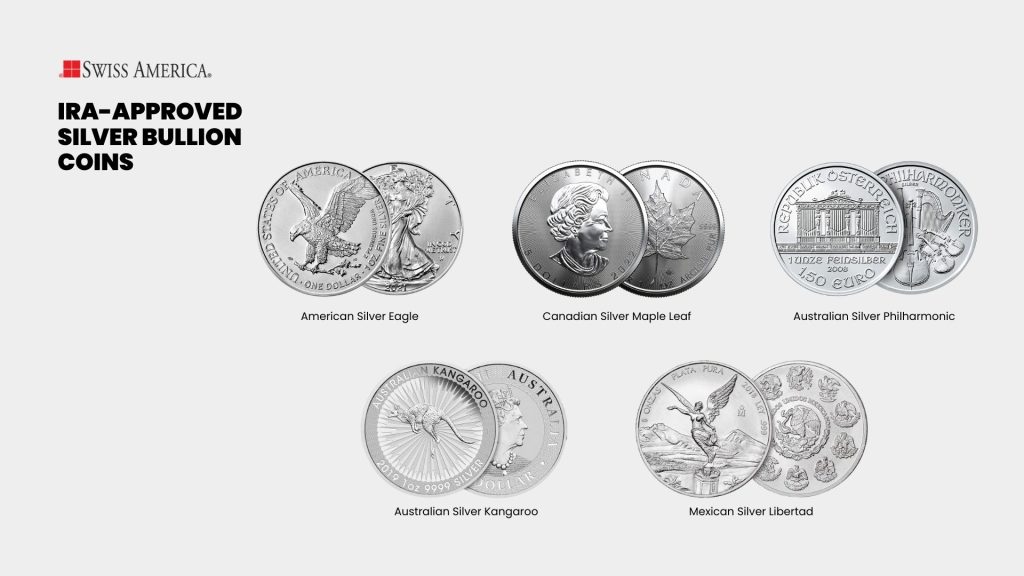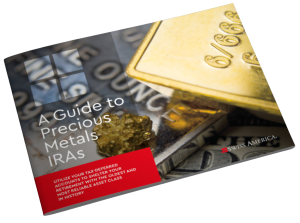
Is it better to buy silver coins or bars? Well, some investors will swear by coins and others by bars. Once you dig deeper into their reasons, you’ll discover it all comes down to their investment goals and investor profile. Our own sales data shows 97.6% of the time, investors choose coins but that doesn’t mean it’s the answer for everyone.
Generally, coins work better for retail investors who don’t have as much upfront capital, while bars are the better option for bulk investments. But why is that the case? This guide will go deeper into the factors you should consider when comparing silver bars vs coins. Expect to have enough information to decide which silver product – or perhaps both – is the best fit for your investment portfolio.
Buying silver coins or bars: which is better?
You can compare silver coins and bars using a few factors to decide which is better for you. These include the overall costs, ease of buying and selling, storage, size, and authenticity checks.
Premiums
The price you’ll see online is the spot price of silver. And then you’ll pay a premium when you buy from a precious metals dealer, which covers the costs of production, refining, and distribution expenses.
Physical silver coins tend to carry higher premiums compared to the same amount of silver in bars.
Bottom line: Silver bars are more cost-effective than coins.
Liquidity
If you decide to sell silver bullion coins and bars at the same time, chances are high that the coins will go first. This is because dealers, collectors, and investors recognize and value them all over the world.
Bars are less popular with retail investors. Large-scale investors, like major institutions, dominate the bar market. So, you might notice fewer spontaneous transaction opportunities and more complex authentication procedures.
Bottom line: Silver bullion coins are more liquid than bars.
Storage and security
You can easily store your silver coins at home or in safe deposit boxes. To minimize the risk of loss, you may also spread storage across different locations. You don’t necessarily want to lose any amount of your investment, but the lower value for each coin also reduces risk if lost.
But if you’re buying large bars, you’ll need to consider professional storage. That might mean storing your assets via an insured bullion dealer or a high-security vault.
Bottom line: It’s more cost-effective to store coins safely compared to bars.
Size and divisibility
Silver bullion coins come in various sizes. You can get a 1-oz coin or even fractional sizes like 1/10 oz. If you want to build your precious metals exposure through small incremental investments, coins win here.
You’ll find silver bars available in sizes like 1 oz, 5 oz, 10 oz, and up to 1000 oz. This means you can’t sell portions of large bars when you want to liquidate part of your holdings. So, while bars are economical for bulk purchases, coins give you flexibility for smaller transactions.
Bottom line: Coins are better for retail investors who want flexible purchases and sales.
Tax and legal considerations
You’ll pay capital gains tax on silver bars and coins if you sell them for a profit. The IRS classifies precious metals as collectibles, which means you’ll have a maximum capital gains rate of 28%. If you don’t make a profit, you’ll have no tax liabilities.
Another government regulation you should keep in mind is reporting. If a single cash transaction for bars exceeds $10,000, the precious metals dealer must report it to the IRS. For coins, sales of 90% silver bullion coins with a face value of over $1,000 require reporting.
Bottom line: Both coins and bars can result in capital gains tax.
Purity and authenticity
Genuine silver coins and bars have a purity of at least .999, which is 99.9% pure silver. Government mints often mark coins with anti-counterfeiting features like micro-engraving to make them easier to verify. So, you can easily verify coins through visual checks and weight comparisons.
Bars also carry purity markings but may require more sophisticated testing methods to confirm their authenticity. Without professional verification, there’s an increased risk of counterfeiting for bars. That might be troublesome when reselling your holdings.
Bottom line: It’s easier to verify the authenticity of coins yourself than bars.
Silver coins and bars: What are they?
Both bars and coins are forms of silver bullion. This is basically physical silver that you hold for investment purposes. Bullion has no numismatic value or what we call a coin’s worth to collectors. Instead, its value comes from its intrinsic metal content rather than any collectible or historical significance.
For the basics, silver bars are rectangular pieces of silver. Reputable mints or private mints and refineries often produce silver bullion bars in various sizes, from 1 ounce to over 100 ounces.
Most silver coins are from government mints. Almost all of them contain one troy ounce of silver, but you can find exceptions. Popular silver bullion coins include:
Canadian Silver Maple Leaf
Austrian Silver Philharmonic
South African Silver Krugerrand
- Mexican Silver Libertad

The benefits of buying silver bars and coins
Why should you invest in silver bullion bars and coins in the first place? Just like with any investment, it’s a good idea to understand this asset in and out. The more solid and data-backed reasons you have, the more comfortable you’ll feel investing your hard-earned money.
Potential capital appreciation
One of the benefits of investing in silver is that it gives an affordable way to enter the physical precious metals market. As of November 2024, silver trades are above $34 per ounce compared to gold at over $2,700 per ounce. This price difference makes silver more accessible for investors without much upfront capital or anyone looking to dollar-cost average on a budget.
Even with the lower price, the potential returns on a silver investment can be attractive, especially with current prices at record highs. For instance, if you bought the precious metal in 2000 at $4.95, you’d be selling it today at a 587% return rate.
Even those who bought recently in 2020 at $20.69 per ounce are seeing an ROI of about 64.3%. If you’re not focused on selling, you can still see how much your holdings would be worth depending on the entry point.
Crisis hedge
Another good reason to invest in silver is its historical track record of acting as a crisis hedge, especially during currency crises, systemic financial failures, and political instability.
Silver performance during times of financial crisis
Take a look at the 2008 financial crisis when silver surged from $14.50 to $48.70 per ounce (+236%) in 2011 as investors wanted a safe place to store their wealth from banking system instability.
A similar silver rally happened during the COVID-19 pandemic. The prices initially dropped to about $12/oz, then rebounded to $29.42/oz (+138%) due to government monetary stimulus and economic uncertainty.
Silver performance during currency crises
Besides the financial crisis, we can see silver’s value in times of currency devaluation and political turmoil. It might be hard to imagine such extreme events, but they have happened before. For instance, Argentina experienced an economic crisis in 2001-2002 and the government announced a bank freeze, preventing citizens from accessing their savings. During this period, silver gained in peso terms, protecting local holders’ purchasing power.
Similar preservation of wealth using this metal happened during hyperinflationary periods in Venezuela and Zimbabwe. Also, during the fall of the Soviet Union, silver served as a valuable tool for international transactions and a store of value as the ruble collapsed.
Reliability
Owning tangible silver bars and coins also gives you a true sense of security, unlike paper silver. Your wealth cannot go under because of corporate bankruptcy or financial system failure, as we often see during crises.
Major silver ETFs like SLV have constantly faced questions about their physical silver backing. During the 2020 pandemic, mining companies like Pan American Silver saw their stock plummet due to mine shutdowns. At this time, physical silver owners maintained full control of their investments. Similarly, First Majestic Silver shareholders watched their investments drop 50% in 2021 due to a tax dispute that had nothing to do with silver’s actual value.
In short, a silver bullion that you own can’t declare bankruptcy, face a labor strike, or turn out to have less metal than promised.
Portfolio diversification
If you want silver investments for portfolio diversification, this one is for you. The precious metal often moves independently from, and sometimes opposite to, stocks and bonds. During the 2008 financial crisis, while the S&P 500 crashed 38.5%, silver surged 448% from its lows to its 2011 peak from $9 to $48.70.
This pattern repeated during COVID-19, when silver jumped 142% from March to August 2020 while stocks struggled to recover. The math also confirms this relationship: silver’s correlation with the S&P 500 is just 0.25. And it actually has a slightly negative correlation with bonds of -0.12.
Such patterns work because while stocks depend on corporate earnings and economic growth, silver prices react to industrial demand, monetary conditions, and safe-haven buying during crises.
The risks of buying silver bars and coins
This guide can’t be balanced without giving you the potential risks of buying silver coins and bars, including price swings and extra costs.
Volatility
To start with, it’s true that silver prices can be highly volatile in the short term compared to other precious metals like gold. If you look at silver’s historical prices, you’ll see that the metal often drops initially, then recovers dramatically, especially during crises. Sometimes this creates historical highs.
Investors who buy at all-time highs often face long, painful waiting periods for recovery. For instance, say you bought during the 2011 peak at $48.70. You’d still be underwater by nearly 30% after 13 years. Fortunately, you can beat this downside by accumulating silver regularly through dollar cost averaging before rallies begin when a crisis strikes.
Additional costs
Beyond price risk, physical silver comes with extra costs that you should keep in mind. This includes storage and security for your metals. Account for these costs whether you’re paying for a home safe, safe deposit box, or professional vault storage.
Also, factor in insurance costs because standard homeowner’s policies often limit coverage for precious metals.
How to invest in physical silver
Are you ready to invest in silver bars or coins? The first step is to decide which form of silver you want to start with. Think about how many silver products you want to own based on your overall investment strategy and risk tolerance.
Next, look for reputable dealers who guarantee authenticity. This step is so important because you don’t want to end up buying counterfeit bars or coins at the real price. It also affects your ability to liquidate the precious metal because no one will buy a counterfeit back from you.
Consider storage options as well to ensure your holdings are safe at a cost-effective plan.
Silver investment with Swiss America
For over 40 years, thousands of happy customers have bought silver bullion coins and bars from Swiss America. You’ll find our expert team ready to support your needs and share in-depth guides to help address your questions.
Our credentials and commitment to the quality and authenticity of physical gold, silver, and platinum products allow you to be confident in your investment decisions. We can also provide guidance on how to invest in metals using retirement funds to set up a gold or silver IRA.
You’ll also get transparent pricing and online access to see the status of your silver items compared to market value. And, if you ever want to sell your metals, you can leverage our buyback program to liquidate as needed.
Final verdict: which is the better investment?
The simple answer is that none is better than the other. Your choice of physical silver bars vs coins will depend on your investor profile, as each offers unique advantages and possible cons.
Silver coins are ideal if you want to make smaller investments over time and are short on storage space. They’re also a good pick for high liquidity and possible collectible value.
Silver bars make more sense if you’re a large-scale investor looking for a cost-effective silver acquisition. You’ll get them at lower premiums, close to the spot price. So, go for bars if you want to make bulk investments that maximize silver content.
Silver coins can be worth more than bars due to their legal tender status, collectibility, and higher demand in the retail market.
Is it better to buy silver coins or bars? FAQ
What is easier to sell, silver bars or coins?
Silver coins are easier to sell than bars because of their wide recognition and acceptance among investors and collectors, making them more liquid in the market.
Can you make money from silver coins?
Yes, you can make money from silver coins, particularly if they have collectible value or if silver prices increase over time.
Note: The information in this post is for informational purposes only and should not be considered tax or legal advice. Please consult with your own tax professionals before making any decisions or taking action based on this information.
